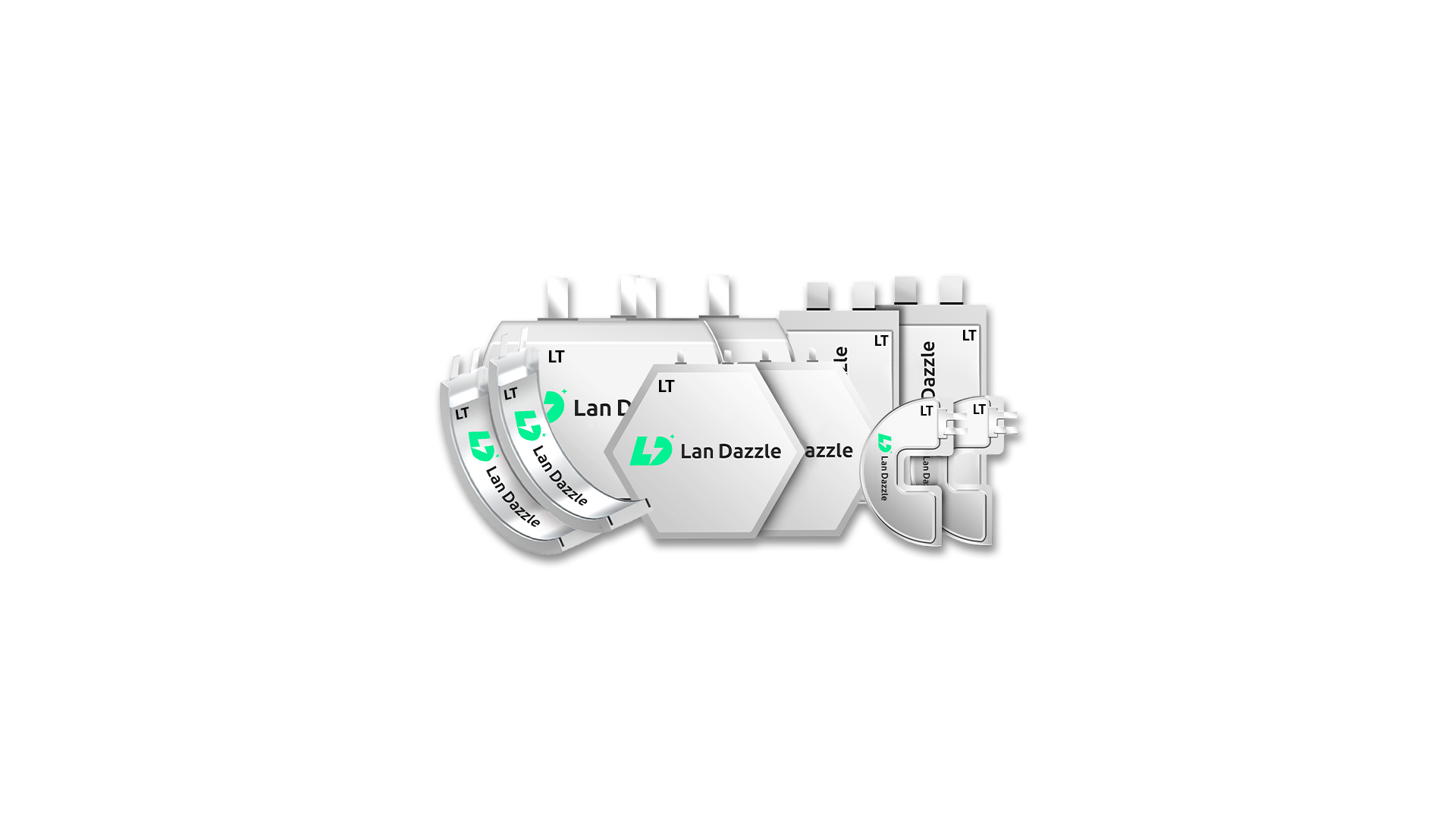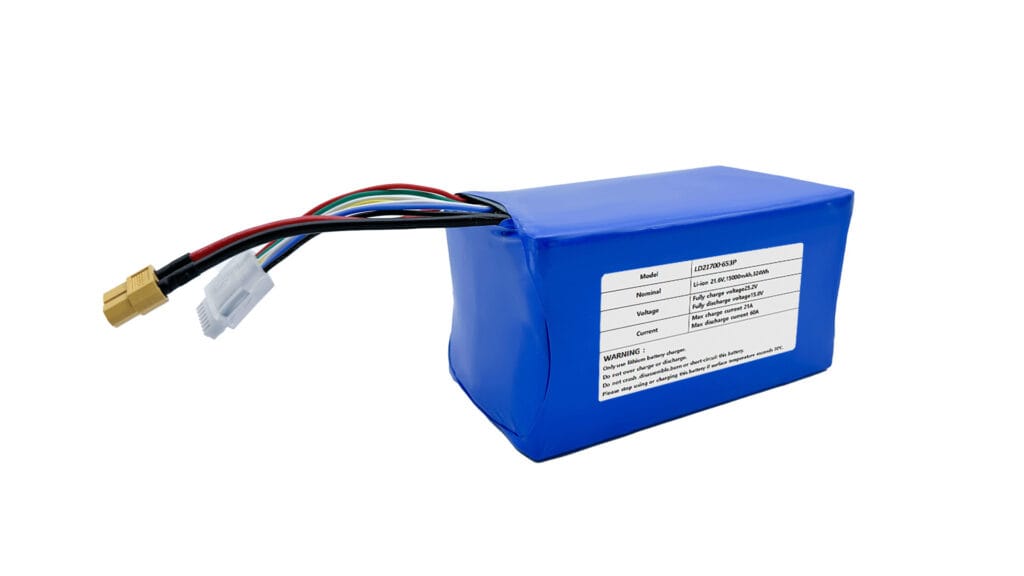Irregular shape batteries are transforming the world of wearable technology from day one. As wearable devices become more integrated into our daily lives, the need for power sources that adapt to complex and varied form factors has never been greater. Traditional battery designs, with their rigid rectangular or prismatic shapes, limit the innovation and ergonomic integration that modern devices demand. In contrast, irregular shape batteries offer a groundbreaking solution by seamlessly fitting into curved, compact, and even asymmetrical spaces—ushering in a new era of design freedom and enhanced performance for wearables.
Introduction: The Growing Demand for Wearable Tech
The wearable technology market is booming as consumers seek innovative devices—from smartwatches and health monitors to AR glasses—that seamlessly integrate into daily life. However, traditional rectangular or prismatic batteries have long posed design challenges by limiting ergonomic flexibility and aesthetic appeal. Irregular shape batteries offer a revolutionary solution by adapting to unique contours and forms, thereby enhancing both the functionality and comfort of wearables. This breakthrough not only supports custom lithium batteries tailored for advanced designs but also paves the way for next-generation devices that blend technology with art.
2. Key Challenges in Wearable Battery Design
Wearable technology requires power sources that do more than simply supply energy—they must also meet stringent design criteria:
-
Space Constraints: Wearables like smart rings and hearing aids demand ultra-compact, lightweight batteries. For instance, devices with less than 5mm thickness require power sources that maximize every millimeter.
-
Ergonomic Fit: Traditional rigid batteries can create uncomfortable bulk, compromising the user’s 24/7 wearing experience. A flexible design is critical for maintaining both comfort and device functionality.
-
Aesthetic Demands: Consumers increasingly seek sleek, discreet devices where batteries remain hidden within jewelry-like forms. Achieving an elegant integration without sacrificing performance is key.
-
Performance Needs: Balancing high energy density with safety and flexibility is essential to support dynamic movements and extended usage periods.
Each of these challenges underlines the necessity for a new generation of batteries that are not only powerful but also adapt seamlessly to the innovative design of modern wearables.
3. How Irregular Shape Batteries Address These Challenges
Irregular shape batteries redefine the design process by offering unprecedented flexibility:
-
Design Freedom: These batteries can be engineered in custom contours that fit curved, circular, or asymmetrical spaces, such as the frames of AR glasses. Their adaptable form factor allows for the creation of flexible battery solutions that can achieve sub-2mm thickness, making them ideal for skin-contact devices like ECG patches.
-
Enhanced Ergonomics: By incorporating soft-pack designs, these batteries conform to the natural curves of the body. In devices like fitness bands or smart clothing, distributed battery modules reduce the need for a single bulky unit, thereby improving comfort and wearability.
-
Improved Energy Efficiency: Irregular shape batteries are optimized to maximize space utilization. For example, ring-shaped batteries can offer up to 30% higher capacity compared to conventional coin cells. Additionally, localized cell configurations ensure that power is delivered exactly where it’s needed—supporting sensors and screens with targeted energy output.
-
Safety Innovations: Advanced materials, such as flexible electrolytes, and custom battery management systems (BMS) designed for irregular layouts help prevent overheating and improve overall safety. These features are critical as the demand for both higher energy density and safety in wearable devices increases.
| Aspect | Traditional Battery | Irregular Shape Battery |
|---|---|---|
| Size | Fixed rectangular/prismatic designs that are limited in adapting to unique device contours. | Custom, adaptive contours that allow ultra-thin profiles and perfect fitting into irregular, compact spaces. |
| Capacity | Often underutilizes available space, potentially resulting in lower energy density. | Optimized layout can maximize space usage, achieving up to 30% higher capacity by reducing wasted volume. |
| Lifespan | Standard lifespan with possible challenges in heat dissipation and thermal management. | Enhanced thermal management through distributed battery modules can lead to a longer operational lifespan. |
| Ergonomic Fit | Rigid and bulky, often compromising comfort and aesthetic integration in wearables. | Flexible and conformable design enhances user comfort and allows seamless integration with the device’s shape. |
4. Real-World Applications in Wearables
Irregular shape batteries are already making significant inroads across various wearable sectors:
-
Medical Devices: Ultra-thin batteries power smart patches that monitor glucose levels (for instance, Dexcom G7 integration) and other vital signs. In some cases, biocompatible, irregular batteries are used in implantable devices like pacemakers, ensuring reliability while meeting strict medical safety standards.
-
Fitness & Lifestyle: In consumer wearables such as smart rings (e.g., Oura Ring), the use of curved batteries enables extended battery life—sometimes up to 7 days on a single charge. Additionally, e-textiles integrating woven or flexible batteries are revolutionizing the athleisure market by combining style with practicality.
-
AR/VR & Fashion Tech: The integration of irregular batteries into AR glasses is particularly notable; some designs mold batteries into the temple arms of the glasses, reminiscent of innovative collaborations like the Meta Ray-Ban project. Furthermore, luxury wearables featuring jewelry-embedded batteries with high-end finishes are emerging, demonstrating that power sources can be both hidden and stylish.
5. Technological Enablers
Several technological breakthroughs are driving the adoption of irregular shape batteries:
-
Material Breakthroughs: The use of graphene-based electrodes is a game changer for flexibility and fast charging. Research published in reputable journals like Nature shows that graphene-enhanced materials can significantly improve battery performance. Similarly, solid-state electrolytes have led to leak-proof, bendable designs ideal for wearable applications.
-
Advanced Manufacturing: Modern fabrication techniques such as laser cutting, 3D printing, and advanced lamination allow for the precise shaping of batteries into complex forms. These techniques not only support the production of custom lithium batteries but also contribute to more reliable, scalable manufacturing processes.
-
Smart Integration: Hybrid systems that combine energy harvesting methods—such as solar and motion energy—with irregular batteries are emerging. These smart integrations ensure that wearable devices remain operational even during extended periods of use.
6. Market Trends & Future Outlook
The market for wearable batteries is experiencing rapid growth. According to MarketsandMarkets, the wearable battery market is projected to reach $2.1B by 2030 with a CAGR of 15%. This robust growth is fueled by several trends:
-
Emerging Innovations: Technologies such as self-healing batteries and transparent batteries for see-through AR displays are on the horizon. These innovations further highlight the potential of irregular shape batteries in revolutionizing wearable tech.
-
Sustainability: As environmental concerns rise, the development of recyclable and eco-friendly battery materials, like cellulose-based electrodes, is gaining momentum. Such sustainable approaches are increasingly important in the design of next-generation wearable devices.
-
Consumer Demand: The continuous evolution of consumer expectations, driven by a desire for unobtrusive and high-performance devices, ensures that the demand for wearable tech batteries that are both efficient and aesthetically pleasing will only grow.
7. Barriers & Solutions
While the potential of irregular shape batteries is immense, several challenges remain:
-
Cost Challenges: High research and development costs can be a barrier. However, as economies of scale are achieved—driven by increased adoption by leading brands such as Apple—the cost per unit is expected to drop, making these batteries more accessible.
-
Regulatory Hurdles: Meeting regulatory standards is crucial for wearable devices. For example, compliance with IEC 62133 for flexible batteries and ISO 13485 for medical devices is necessary to ensure safety and reliability.
-
Consumer Education: Addressing misconceptions about the safety and longevity of irregular batteries is important. Educating consumers about the rigorous testing and innovative design processes behind these batteries can boost market acceptance.
By addressing these barriers head-on through strategic partnerships and ongoing innovation, the wearable technology sector can fully harness the benefits of flexible battery solutions.
8. Conclusion: The Path Forward
Irregular shape batteries are not just a technical upgrade; they represent a paradigm shift in how wearable devices are designed and experienced. By merging form, function, and user experience, these batteries are set to redefine the wearable tech landscape. Manufacturers and designers are encouraged to collaborate with battery innovators to accelerate the adoption of these custom lithium batteries, paving the way for devices that are both powerful and elegantly integrated.
Embrace the future of wearable technology by investing in irregular shape battery research and development. Let’s work together to create devices that not only meet the demands of modern lifestyles but also set new standards in innovation and design.
Lan Dazzle: Revolutionizing Wearable Power Solutions
Experience the next generation of battery innovation with Lan Dazzle’s Irregular Shaped Batteries. Designed specifically for wearable technology, our batteries redefine what’s possible by merging advanced performance with unmatched design flexibility. For more details and to experience the future of battery technology, contact us via email:info@landazzle.com.




@2x.png)

